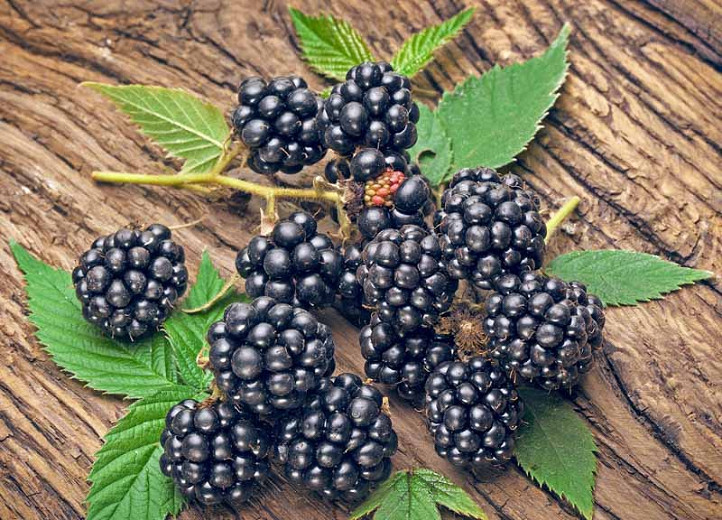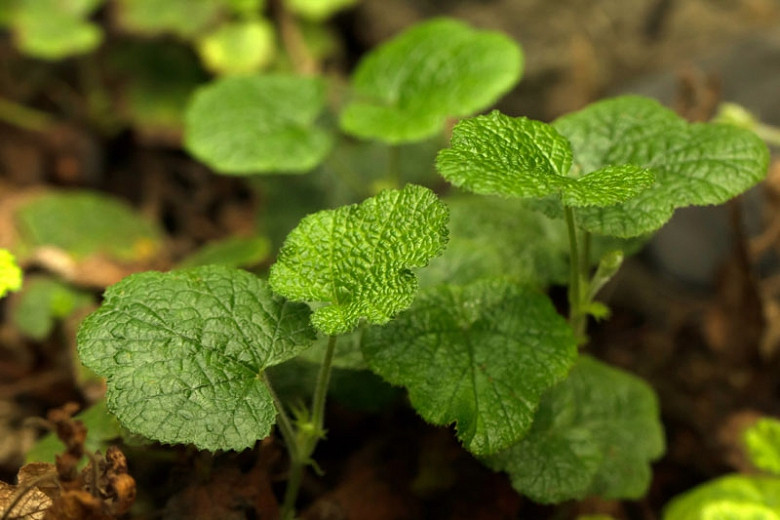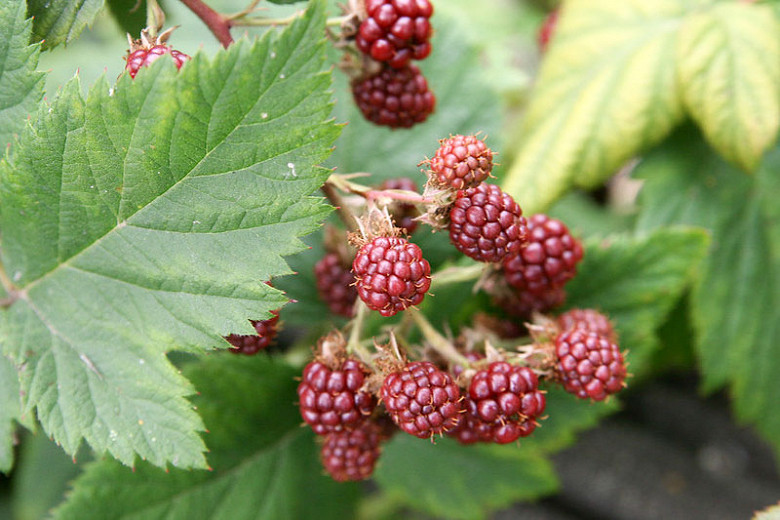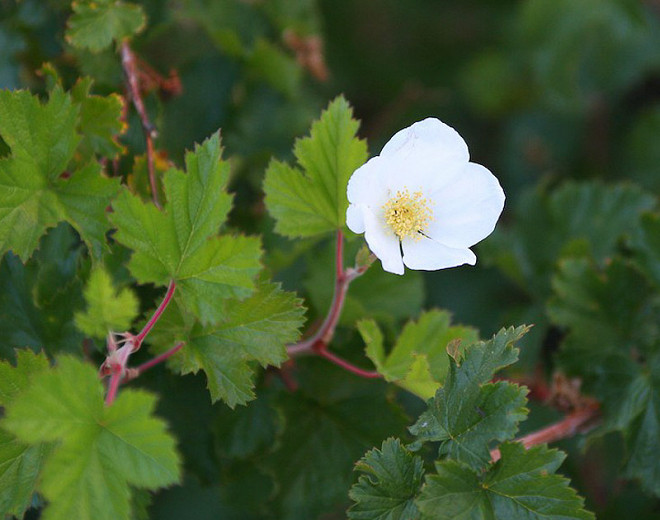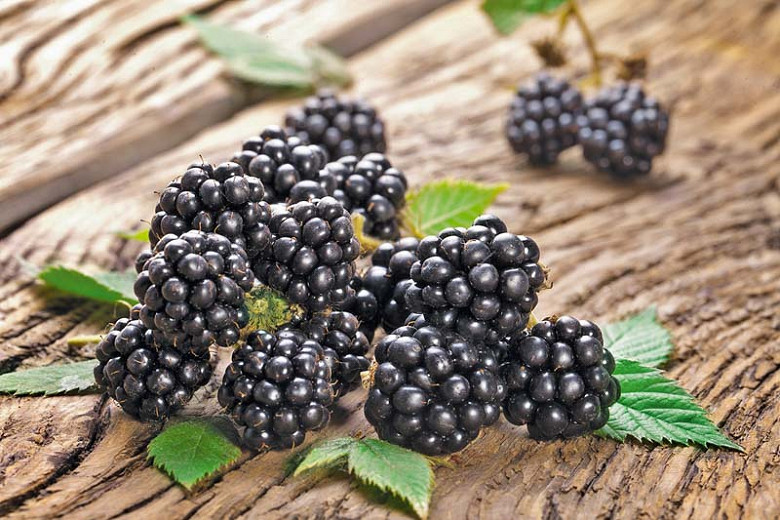Rubus fruticosus Navaho (Blackberry)
Rubus fruticosus ‘Navaho’ is an erect, self-fruitful, thornless shrub with clusters of pinkish-white, rose-like flowers which give way to a heavy crop of large, blue-black, juicy-sweet blackberries over a harvest season lasting 30 days in mid-late summer. The berries are firm and excellent for fresh eating, jams, jellies, and pies.
Rubus fruticosus 'Navaho' is an erect, self-fruitful, thornless shrub with clusters of pinkish-white, rose-like flowers which give way to a heavy crop of large, blue-black, juicy-sweet blackberries over a harvest season lasting 30 days in mid-late summer. The berries are firm and excellent for fresh eating, jams, jellies, and pies. Free-standing, this plant does not require support.
- Grows up to 4-5 ft. tall and wide (120-150 cm).
- A full sun to part shade lover, this plant is best grown in organically rich, slightly acidic, moist but well-drained soils. Blackberries dislike waterlogged soils. For best results, plant in a sheltered, sunny position. Will tolerate light shade, but the plant yields better and is more healthy when sited in full sun.
- Spring is the best time to plant blackberries.
- Training blackberry plants to some support makes picking easier and keeps the plants tidy and healthy. For production purposes, upright blackberry shrubs are usually planted 3 ft. apart (90 cm) and trailing shrubs 10 ft. apart (300 cm).
- Fruit is produced on two-year-old canes (previous season's growth). Prune erect blackberries twice each year. In summer, pinch out the tips of new canes as they reach 3 ft. (90cm) to promote the growth of side branches, on which fruit is borne the following season. Prune again in late winter, first removing, at ground level, all canes that fruited the previous season. Remove any young canes that are crowded, spindly, or diseased. Shorten the fruiting laterals to a length of 12-18 in. (30-45 cm).
- To prune trailing blackberries, first cut away any canes that have fruited. Do this after harvest or when the plants are dormant. In late winter, thin out new canes to the most vigorous 8-10 per plant. Shorten long canes to 7 ft. (210 cm) and laterals to 12-18 in. (30-45 cm).
- Good disease resistance. Can get aphids, leafhoppers, raspberry beetle and gall mites.
- Propagate by tip layering or from cuttings.
Requirements
| Hardiness | 6 – 8 |
|---|---|
| Plant Type | Fruit, Shrubs |
| Plant Family | Rubus – Brambles |
| Exposure | Full Sun, Partial Sun |
| Season of Interest | Summer (Mid,Late) |
| Height | 4' – 5' (120cm – 150cm) |
| Spread | 4' – 5' (120cm – 150cm) |
| Spacing | 48″ – 60″ (120cm – 150cm) |
| Water Needs | Average |
| Maintenance | Average |
| Soil Type | Clay, Loam, Sand |
| Soil pH | Acid, Neutral |
| Soil Drainage | Moist but Well-Drained, Well-Drained |
| Characteristics | Showy, Fruit & Berries |
| Attracts | Birds, Butterflies |
